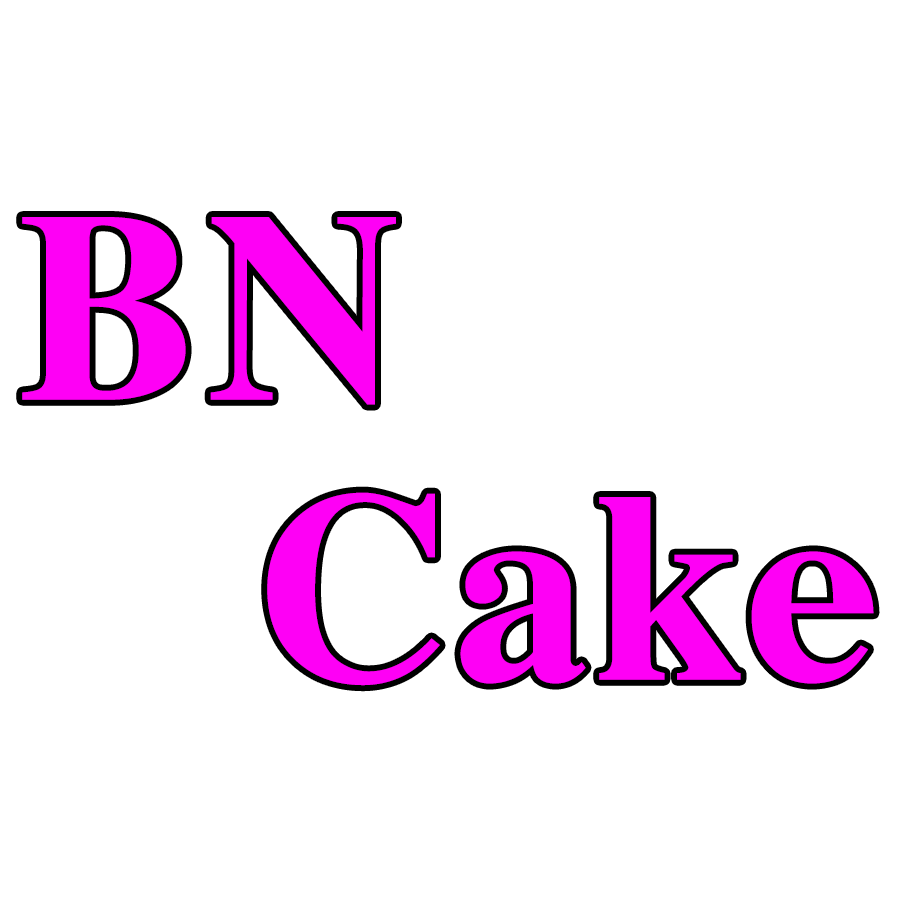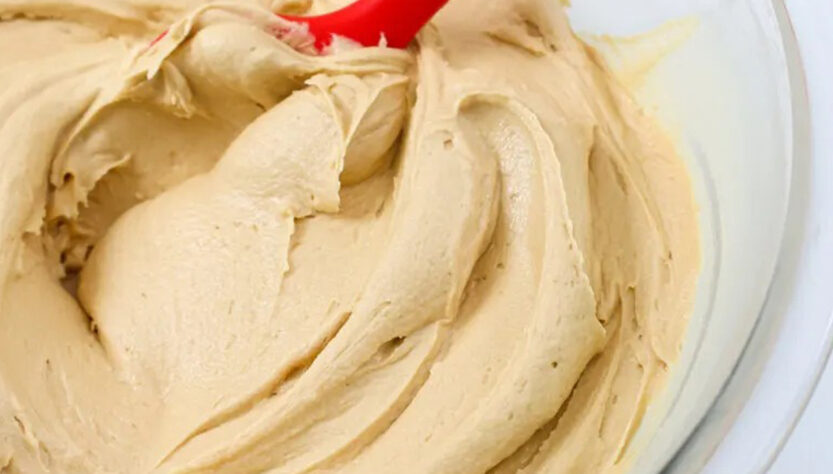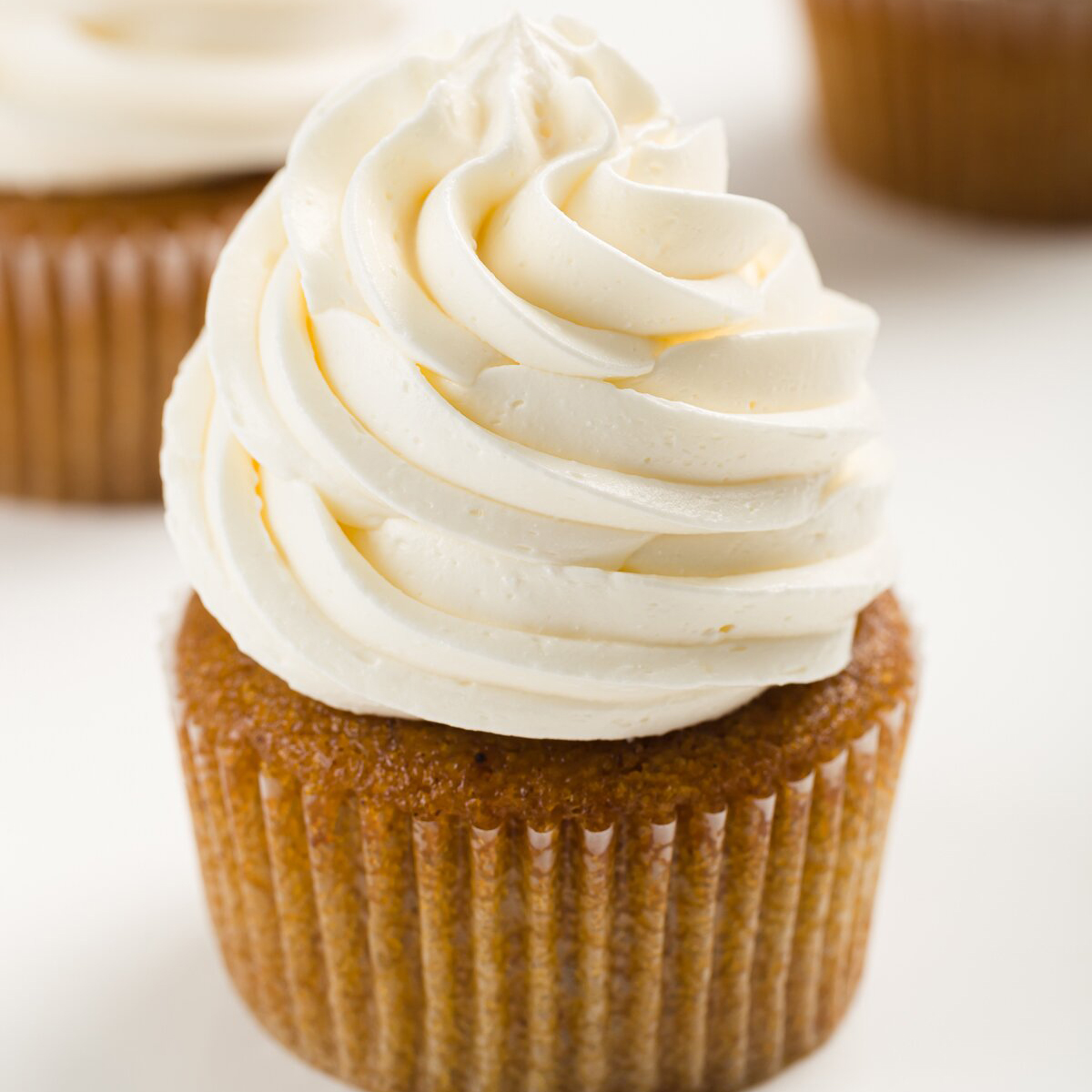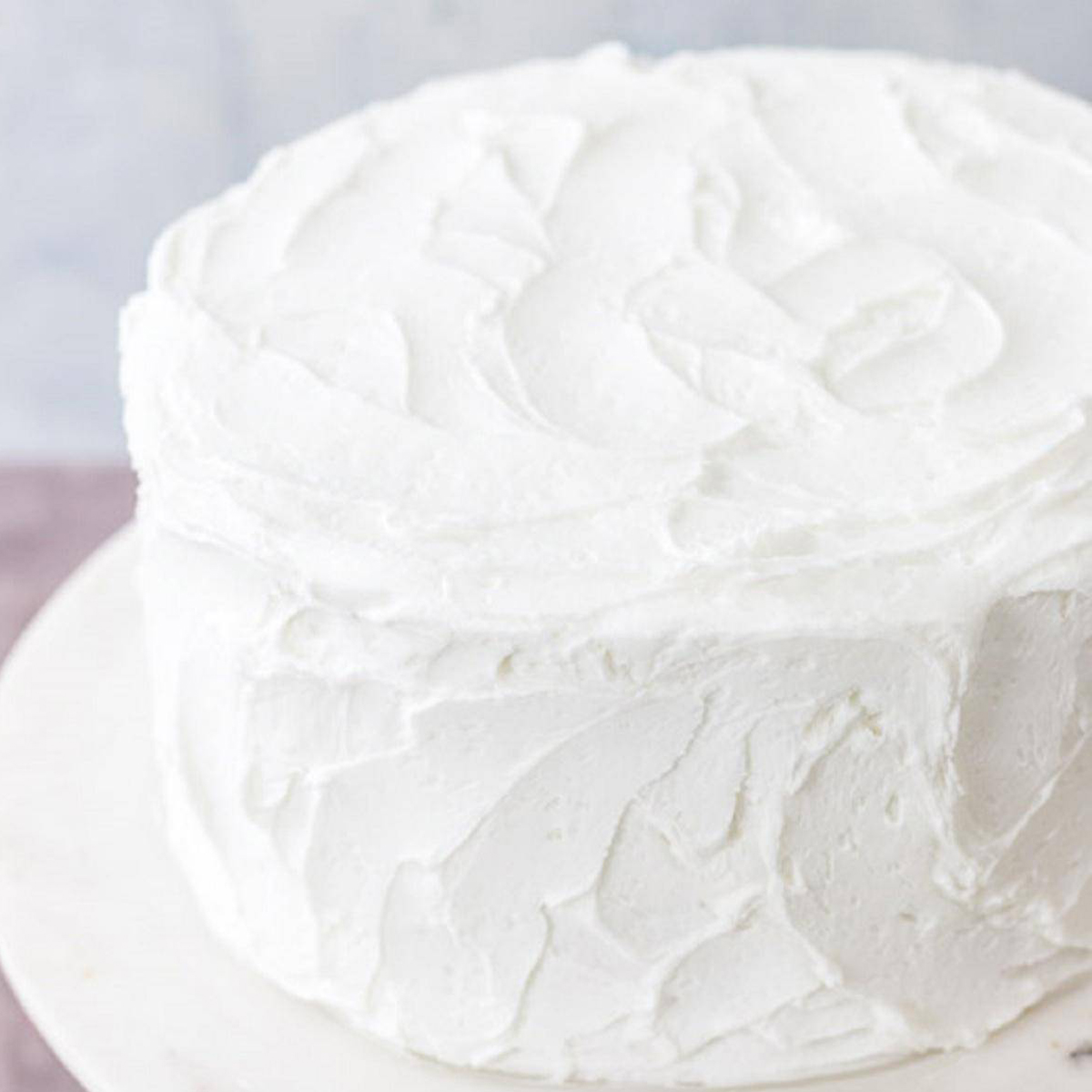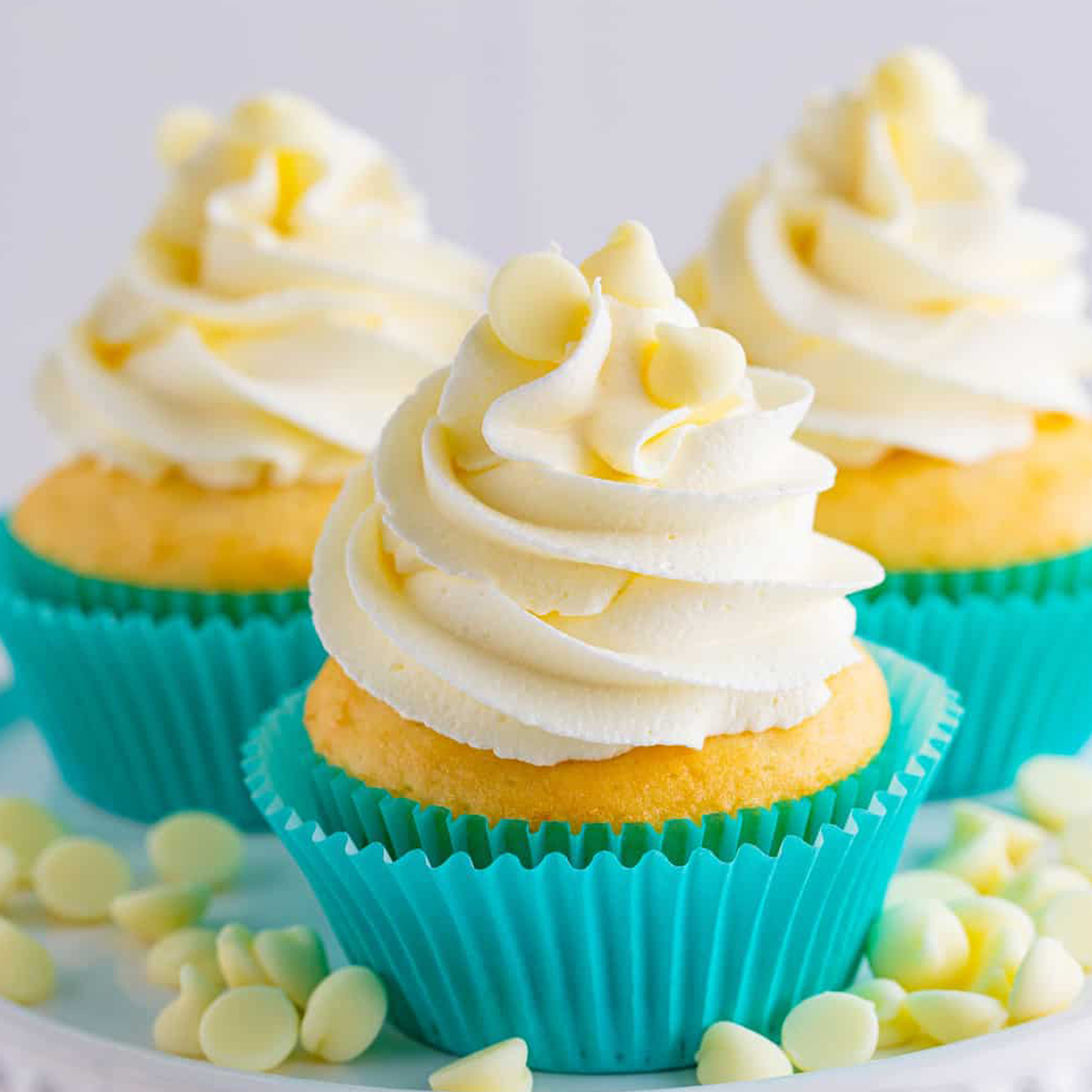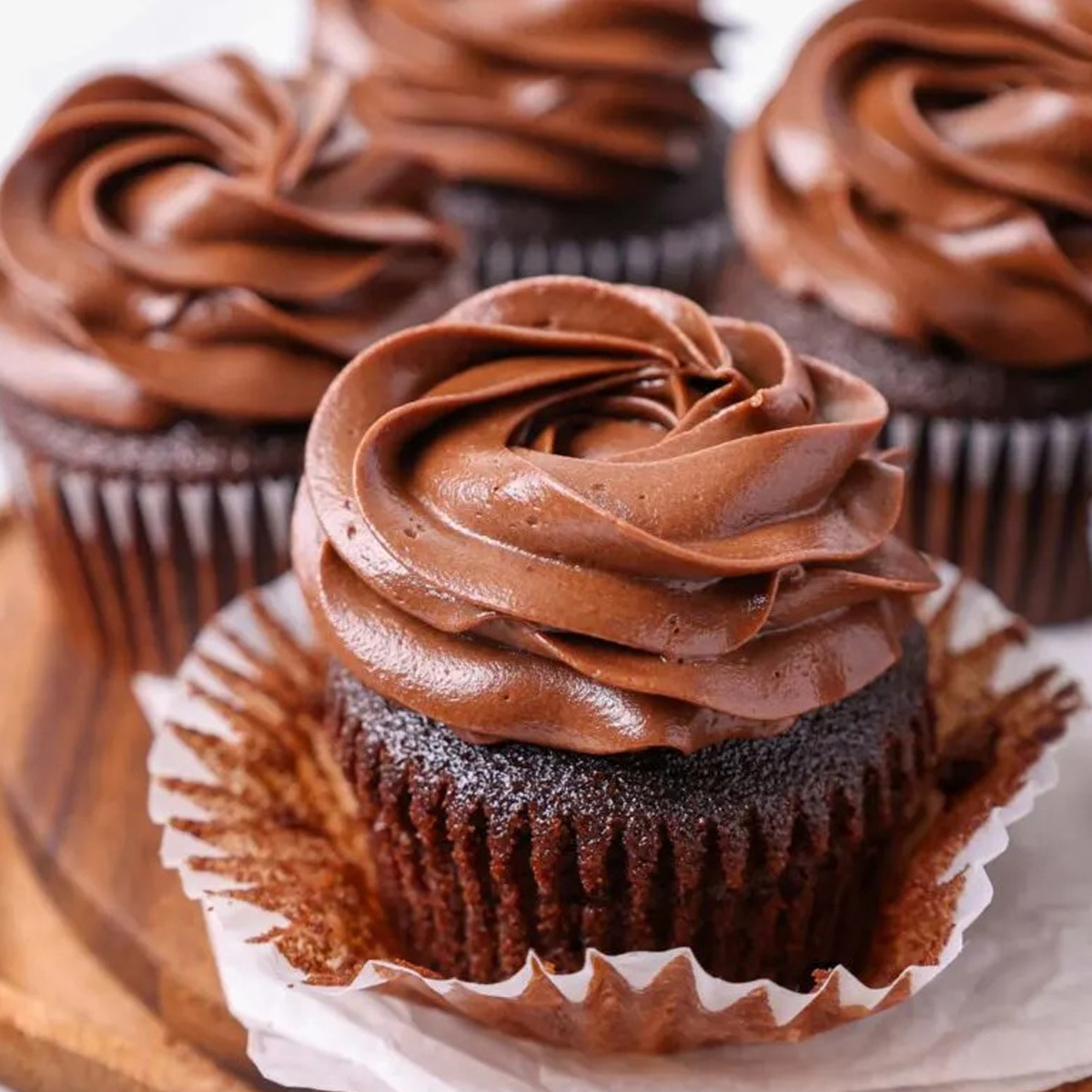Biscoff buttercream is a delectable and indulgent frosting that takes traditional buttercream to a whole new level of flavor. Inspired by the iconic Biscoff cookies, this creamy concoction combines the rich, caramelized taste of the beloved cookies with the smooth and velvety texture of buttercream. Whether you’re a fan of Biscoff cookies or simply looking to elevate your baked goods with a unique and irresistible frosting, Biscoff buttercream is sure to delight your taste buds and add a touch of nostalgia to your favorite treats. In this introduction, we’ll explore the delightful world of Biscoff buttercream, its ingredients, and how you can use it to create mouthwatering desserts that will leave everyone asking for seconds.
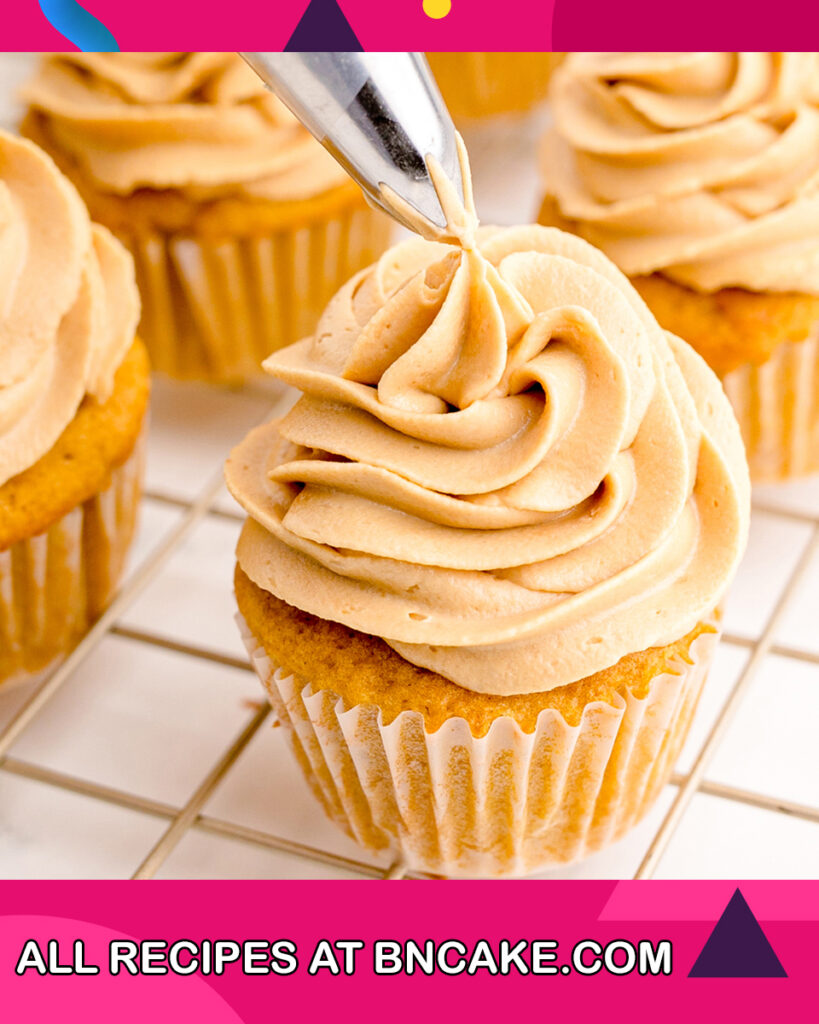
What Is Biscoff Buttercream?
Biscoff Buttercream is a flavorful and creamy frosting made by incorporating Biscoff cookies or Biscoff spread into a traditional buttercream base. Biscoff cookies, also known as Speculoos or Lotus Biscoff cookies, are spiced, caramelized biscuits that have gained immense popularity for their unique taste and texture. Biscoff spread is a smooth and creamy spread made from these same cookies, creating a delightful blend of sweet and spiced flavors.
To make Biscoff Buttercream, you typically start with a basic buttercream recipe that consists of butter, powdered sugar, and often a bit of vanilla extract and milk or cream. The key difference is the addition of crushed Biscoff cookies or Biscoff spread, which infuses the frosting with the distinctive caramelized flavor and a hint of spice.
The resulting Biscoff Buttercream is a versatile topping that can be used to frost cakes, cupcakes, cookies, or even as a filling for pastries and macarons. Its sweet, spiced, and slightly nutty profile makes it a delightful choice for those seeking a unique twist on traditional frosting, and it pairs exceptionally well with a variety of baked goods. Whether you’re a fan of Biscoff cookies or simply looking to elevate your desserts, Biscoff Buttercream is a delicious way to add a touch of indulgence to your culinary creations.

Why You Will Love Biscoff Buttercream Recipe?
- Irresistible Flavor: Biscoff Buttercream offers a unique and mouthwatering taste that combines the rich, caramelized sweetness of Biscoff cookies with the creamy goodness of buttercream. It’s a flavor explosion that’s hard to resist.
- Nostalgia Factor: If you’re a fan of Biscoff cookies, this frosting will take you on a trip down memory lane. It captures the essence of these beloved cookies in a creamy form, offering a delightful dose of nostalgia.
- Versatile: Biscoff Buttercream is incredibly versatile. You can use it to frost cakes, cupcakes, or cookies, or as a filling for pastries, macarons, and more. Its adaptability allows you to get creative with your desserts.
- Easy to Make: The recipe for Biscoff Buttercream is straightforward and doesn’t require any complex cooking techniques. With just a few simple ingredients and steps, you can whip up this delectable frosting in no time.
- Crowd-Pleaser: Whether you’re baking for friends, family, or a special occasion, Biscoff Buttercream is a surefire way to impress. Its unique flavor profile stands out and is sure to be a crowd-pleaser.
- Texture: The creamy texture of buttercream complements the crunchiness of crushed Biscoff cookies perfectly, creating a delightful contrast that adds to the overall enjoyment.
- Customizable: You can adjust the sweetness and intensity of the Biscoff flavor to suit your preferences. Add more or fewer crushed cookies or Biscoff spread to achieve the desired taste and consistency.
- Instagram-Worthy: Biscoff Buttercream adds an aesthetically pleasing element to your baked goods. Its warm, caramel color and specks of cookie crumbs make desserts visually appealing and Instagram-worthy.
- Surprise Element: When you serve a dessert with Biscoff Buttercream, you introduce your guests to a delightful surprise. It’s a frosting that many may not have tried before, making it a conversation starter at any gathering.
- Unique Twist: If you love experimenting in the kitchen and trying new flavor combinations, Biscoff Buttercream offers a delightful twist on traditional frosting that will keep your taste buds intrigued.
In summary, the Biscoff Buttercream recipe offers a delectable fusion of flavors, versatility in usage, and an opportunity to create memorable desserts that will leave you and your guests craving for more. Whether you’re a seasoned baker or a novice in the kitchen, this frosting is a must-try for anyone seeking a delightful culinary experience.
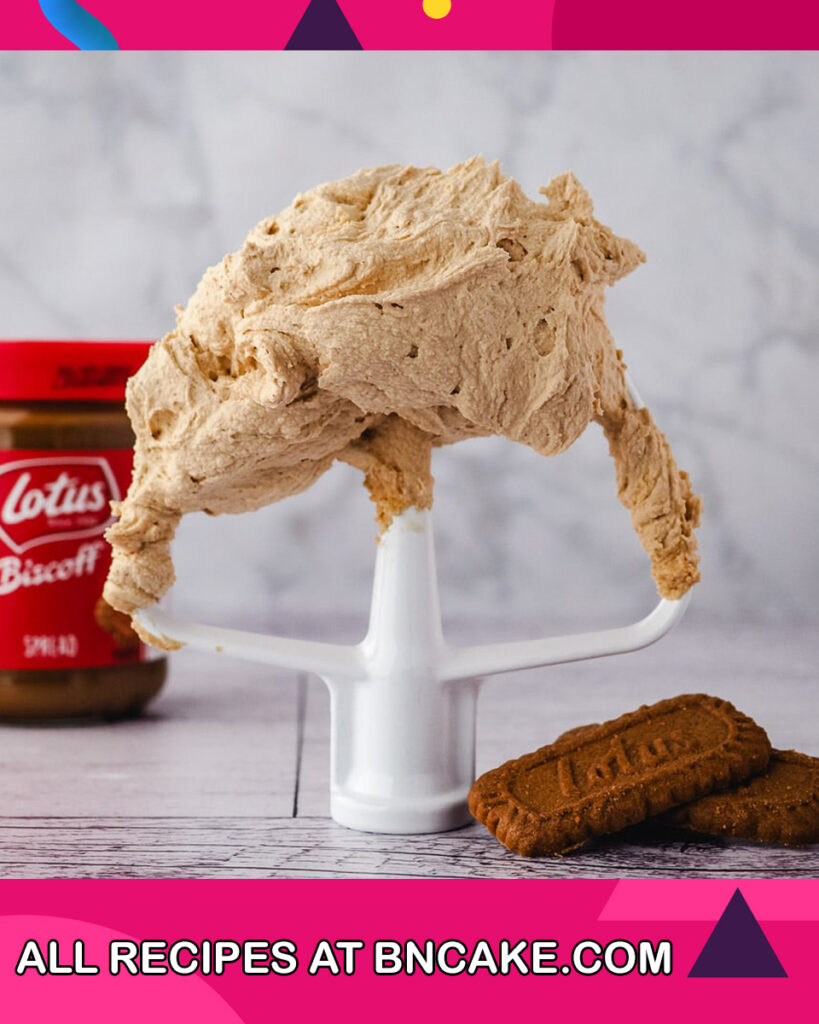
Ingredients For Biscoff Buttercream
- Unsalted Butter: 1 cup (2 sticks), at room temperature.
- Confectioners’ Sugar (Powdered Sugar): 2 to 2.5 cups, sifted. Adjust the amount based on your desired sweetness and consistency.
- Biscoff Cookies: 1/2 to 3/4 cup, finely crushed. This will provide the Biscoff flavor and a slightly crunchy texture. You can crush the cookies using a food processor or place them in a plastic bag and crush them with a rolling pin.
- Biscoff Spread: 1/2 cup. This is the creamy, cookie butter-like spread that adds intense Biscoff flavor to the buttercream.
- Vanilla Extract: 1 teaspoon (optional). It enhances the overall flavor but can be omitted if you want the Biscoff flavor to shine.
- Milk or Heavy Cream: 2-3 tablespoons, as needed to achieve the desired consistency. Adjust to make the buttercream smoother or thicker according to your preference.
- Salt: A pinch (optional). Salt can balance the sweetness and enhance the flavors, but it’s not necessary if you prefer a sweeter frosting.
How To Make Biscoff Buttercream
- Cream the Butter (CB): Beat UB until creamy and smooth, approximately 2-3 minutes.
- Add Biscoff Spread (ABS): Incorporate BS into CB, continuing to beat until well combined.
- Incorporate Confectioners’ Sugar (ICS): Gradually add CS to the mixture while mixing, adjusting the speed as necessary. Scrape down the sides of the bowl as needed.
- Adjust Consistency (AC): Add MC, one tablespoon at a time, to achieve the desired texture. More MC for smoother, less for thicker.
- Add Vanilla and Salt (AVS): If using VE and S, add them to the mixture and beat until fully incorporated.
- Fold in Crushed Biscoff Cookies (FCBC): Gently fold in the finely crushed BC using a spatula, being careful not to overmix.
Your Biscoff Buttercream is ready to frost your favorite desserts, maintaining the rich Biscoff flavor and a creamy texture. Enjoy!

How To Serve Biscoff Buttercream
Serving Biscoff Buttercream is a delightful experience, and it can elevate a wide range of desserts. Here’s how to serve Biscoff Buttercream:
Frosting for Cakes and Cupcakes:
- One of the most common and delicious ways to serve Biscoff Buttercream is as a frosting for cakes and cupcakes. After preparing the buttercream, generously spread or pipe it onto your cooled cakes or cupcakes. You can create decorative swirls, smooth finishes, or rustic textures depending on your preference.
Fillings for Pastries:
- Biscoff Buttercream also works beautifully as a filling for pastries like cream puffs, éclairs, or turnovers. Simply pipe or spoon the buttercream into the hollowed centers of these pastries for a delightful surprise.
Macaron Filling:
- If you’re making macarons, use Biscoff Buttercream as a filling between two macaron shells. The creamy, spiced flavor complements the delicate macaron shells perfectly.
Cookie Sandwiches:
- Create cookie sandwiches by spreading a layer of Biscoff Buttercream between two cookies. This works well with Biscoff cookies or any other cookie of your choice.
Dip for Fruit or Pretzels:
- Serve Biscoff Buttercream as a dip for fresh fruit slices like apples, strawberries, or banana chunks. It also pairs nicely with pretzels for a sweet and salty snack.
Topping for Dessert Parfaits:
- Layer Biscoff Buttercream in dessert parfaits with other components like crushed cookies, whipped cream, or fruit for a delightful dessert treat.
Garnish for Desserts:
- Use a small dollop or swirl of Biscoff Buttercream as a garnish for various desserts, such as ice cream, brownies, or cheesecake. It adds a burst of flavor and an appealing visual element.
Cake Filling Layers:
- If you’re making a layered cake, spread a layer of Biscoff Buttercream between the cake layers. This not only enhances the taste but also provides a beautiful contrast in texture and flavor.
Cupcake Center Filling:
- Surprise your guests by filling the centers of cupcakes with Biscoff Buttercream. Use a cupcake corer or a piping tip to create a hole in the center, then fill it with the buttercream before frosting the top.
Customized Dessert Creations:
- Get creative and use Biscoff Buttercream in your dessert creations. It can be used as a component in your own unique dessert recipes, such as trifle, dessert lasagna, or layered dessert cups.
When serving Biscoff Buttercream, consider the specific dessert you’re preparing and how the buttercream’s unique flavor and texture can enhance it. Be sure to store any desserts with Biscoff Buttercream in the refrigerator if not consumed immediately, as it contains butter and dairy products that can spoil at room temperature. Enjoy the delectable Biscoff flavor in your favorite sweet treats!
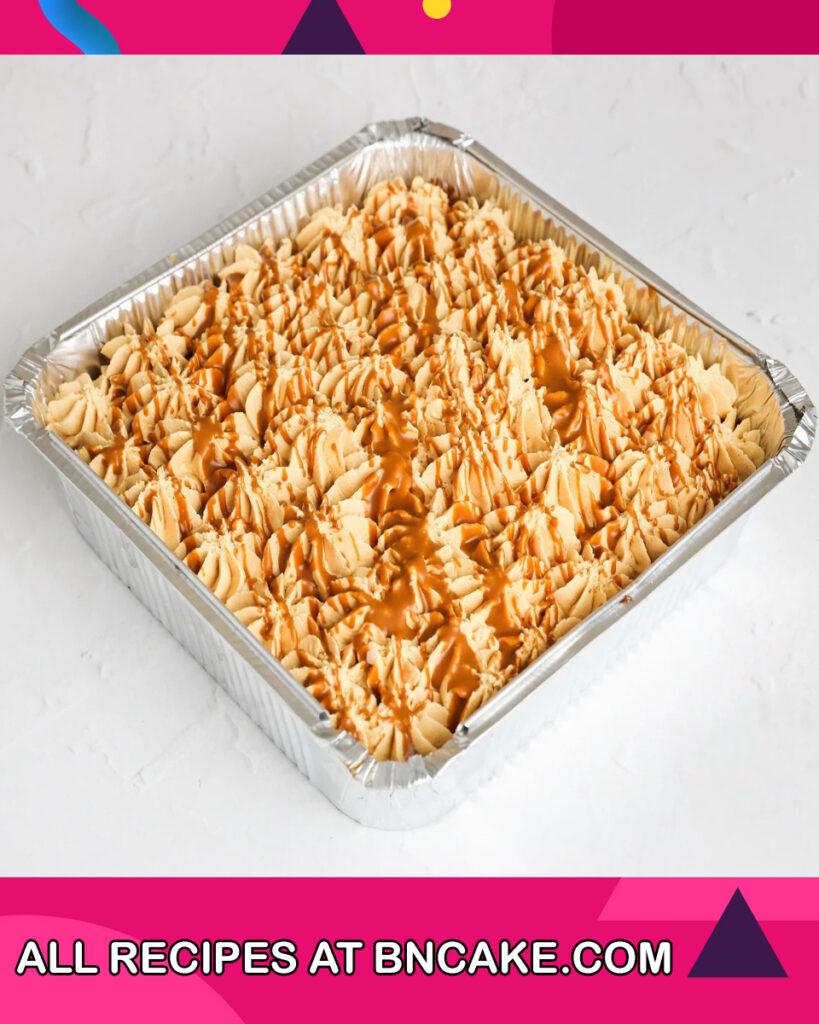
How To Store Biscoff Buttercream
Storing Biscoff Buttercream properly will help maintain its flavor and texture for future use. Here’s how to store Biscoff Buttercream:
- Refrigeration: Biscoff Buttercream contains butter and dairy products, so it’s essential to refrigerate it if you don’t plan to use it immediately. Place it in an airtight container or cover it tightly with plastic wrap to prevent any air from reaching the frosting.
- Sealing: Ensure the container or bowl you use for storage is well-sealed to prevent the buttercream from absorbing any odors from the refrigerator and to prevent it from drying out.
- Labeling: Consider labeling the container with the date of preparation to keep track of its freshness.
- Short-Term Storage: If you plan to use the Biscoff Buttercream within a few days, storing it in the refrigerator is sufficient. It can stay fresh for up to one week when properly stored in the fridge.
- Long-Term Storage: If you won’t be using the buttercream within a week, you can freeze it for longer storage. To freeze, transfer the buttercream to an airtight container, ensuring there is minimal air inside. Alternatively, wrap it tightly with plastic wrap and then place it in a resealable freezer bag. Properly frozen Biscoff Buttercream can remain good for up to 2-3 months.
- Thawing: When you’re ready to use frozen Biscoff Buttercream, move it from the freezer to the refrigerator and let it thaw slowly for several hours or overnight. Avoid thawing it at room temperature as this can lead to separation and texture issues.
- Re-Whipping: After thawing, it’s a good idea to re-whip the buttercream using an electric mixer to restore its smooth texture. Add a little extra milk or cream if needed to reach the desired consistency.
- Quality Check: Before using stored Biscoff Buttercream, give it a taste and texture check. If it has an off smell, unusual color, or if the texture has deteriorated significantly, it may be best to discard it.
Remember that the quality and taste of the buttercream may degrade slightly during storage, but it should still be safe to consume if stored properly. Proper sealing and temperature control are crucial to preserving the freshness and flavor of your Biscoff Buttercream.
LOOKING FOR MORE YUMMY BISCOFF RECIPES?
Tips And Tricks For Biscoff Buttercream
Creating the perfect Biscoff Buttercream can be a delightful experience. Here are some tips and tricks to help you achieve the best results:
- Use High-Quality Ingredients: Start with fresh, high-quality unsalted butter, Biscoff cookies, and Biscoff spread to ensure the best flavor and texture in your buttercream.
- Room Temperature Butter: Allow your unsalted butter to come to room temperature before using it. This makes it easier to cream and results in a smoother buttercream.
- Properly Sifted Confectioners’ Sugar: Sift the confectioners’ sugar before adding it to the butter. This prevents lumps in your buttercream and ensures a smooth consistency.
- Gradually Add Sugar: When incorporating the confectioners’ sugar, add it gradually while mixing to avoid creating a cloud of sugar dust and to help it incorporate evenly.
- Adjust Sweetness: The sweetness of your Biscoff Buttercream is customizable. Add more or less confectioners’ sugar to achieve your desired level of sweetness.
- Biscoff Cookies Texture: If you prefer a smoother texture, grind the Biscoff cookies into a finer powder. For a bit of crunch and texture, leave them slightly coarser.
- Optional Vanilla Extract: The addition of vanilla extract is optional. It enhances the overall flavor but can be omitted if you want the Biscoff flavor to stand out.
- Gradually Add Milk or Cream: When adjusting the consistency with milk or heavy cream, add it one tablespoon at a time. This prevents over-thinning the buttercream.
- Storing and Re-Whipping: If you need to store the buttercream, refrigerate it in an airtight container. When ready to use, let it come to room temperature and re-whip it for a smooth texture.
- Use a Piping Bag: For beautifully decorated cakes and cupcakes, use a piping bag with your favorite tip to pipe the Biscoff Buttercream. It allows for precise and elegant designs.
- Experiment with Colors: You can tint the buttercream with food coloring to achieve different shades, such as a warm caramel hue or any color that complements your dessert.
- Pairing: Consider what you’re serving the Biscoff Buttercream with. It pairs wonderfully with chocolate, vanilla, cinnamon, and other warm flavors. Be creative with your dessert combinations.
- Keep It Cool: If you’re working with the buttercream in a warm environment, it may become too soft. In such cases, briefly place it in the refrigerator to firm up before using.
- Layered Desserts: For layered desserts, like parfaits, make sure to distribute the Biscoff Buttercream evenly for a balanced flavor experience in every bite.
- Quality Control: Always taste your Biscoff Buttercream as you go. Adjust the ingredients to suit your taste preferences, whether that means more Biscoff spread for extra flavor or more confectioners’ sugar for added sweetness.
With these tips and tricks, you can create a scrumptious Biscoff Buttercream that will elevate your desserts and impress your guests with its unique flavor and delightful texture.
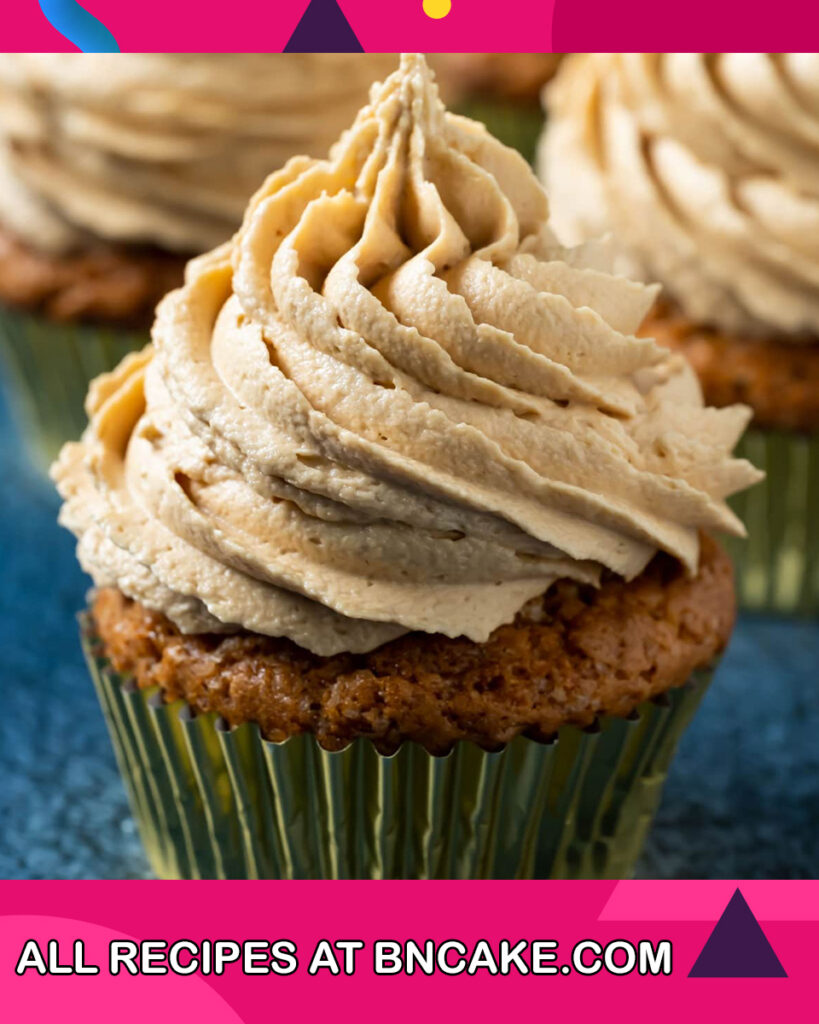
FAQs And Troubleshooting
FAQs:
Can I make Biscoff Buttercream in advance?
- Yes, you can make Biscoff Buttercream in advance and store it in the refrigerator for up to one week or in the freezer for 2-3 months. Be sure to follow proper storage and thawing procedures.
Can I use regular butter instead of unsalted butter?
- While you can use regular (salted) butter, it’s best to use unsalted butter for better control of the salt content in your buttercream. Adjust the optional pinch of salt accordingly.
What can I use instead of Biscoff cookies for the texture?
- If you don’t have Biscoff cookies, you can use graham crackers or digestive biscuits as a substitute for a similar texture and flavor.
How can I make my Biscoff Buttercream less sweet?
- To make it less sweet, reduce the amount of confectioners’ sugar used. Gradually add the sugar and taste as you go to achieve your desired level of sweetness.
Can I make Biscoff Buttercream without Biscoff spread?
- Biscoff spread is a key ingredient for the distinctive Biscoff flavor. While you can try making a similar buttercream without it, you won’t achieve the same signature taste.
Troubleshooting:
My buttercream is too thin. What should I do?
- If your buttercream is too thin, you can thicken it by adding more sifted confectioners’ sugar a little at a time until it reaches the desired consistency.
My buttercream is too thick and stiff. How can I fix it?
- If your buttercream is too thick, you can thin it out by adding a small amount of milk or heavy cream, one tablespoon at a time, until it reaches the desired texture.
My buttercream has a grainy texture. What went wrong?
- A grainy texture can occur if the confectioners’ sugar is not fully dissolved. To fix this, beat the buttercream for a longer duration until it becomes smooth. You can also add a bit more liquid (milk or cream) to help dissolve the sugar.
My buttercream has separated or curdled. How can I salvage it?
- If your buttercream separates, it may be due to temperature differences or overmixing. To fix it, warm the separated mixture slightly (microwave in short bursts) and then re-whip it until it comes together.
My Biscoff Buttercream has an overly strong Biscoff flavor. What can I do?
- If you find the Biscoff flavor too intense, you can balance it by adding more confectioners’ sugar or reducing the amount of Biscoff spread in the recipe.
My Biscoff Buttercream has a strange odor or taste. What should I do?
- If your buttercream has an unusual odor or taste, it may have spoiled. Check the freshness of your ingredients and consider whether it was stored properly. If in doubt, it’s safer to discard it.
These FAQs and troubleshooting tips should help you overcome common challenges and ensure your Biscoff Buttercream turns out delicious and flawless. Enjoy your baking!
Nutrition Information
Below is a rough estimate of the nutritional content for a typical serving (about 2 tablespoons) of Biscoff Buttercream. Keep in mind that this is a general approximation, and actual values may differ:
Calories: Approximately 150-200 calories per serving, Total Fat: Approximately 10-15 grams, Saturated Fat: About 6-8 grams, Cholesterol: Approximately 20-30 milligrams, Sodium: Around 20-30 milligrams, Total Carbohydrates: Approximately 15-20 grams, Sugars: About 14-18 grams, Protein: Less than 1 gram
Please note that Biscoff Buttercream is a high-fat and high-sugar frosting, primarily due to the butter and confectioners’ sugar content. The values provided here are approximate and can vary based on the specific quantities of ingredients used in your recipe and any variations you make, such as adjusting the amount of sugar or adding more Biscoff spread.
If you require precise nutritional information for dietary or health reasons, it’s recommended to calculate the values using the exact ingredients and quantities you use in your preparation. You can use nutritional analysis tools or consult the packaging of the individual ingredients for more accurate information.
